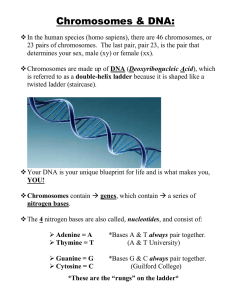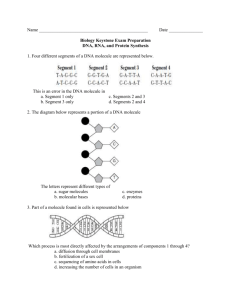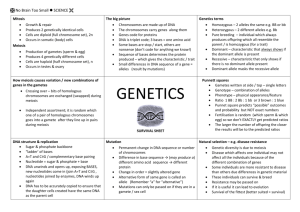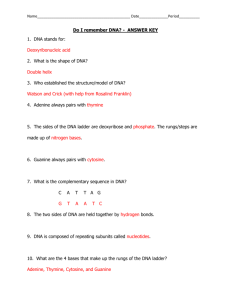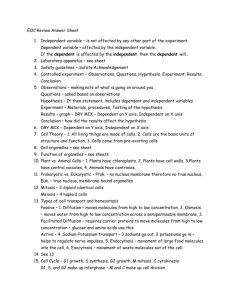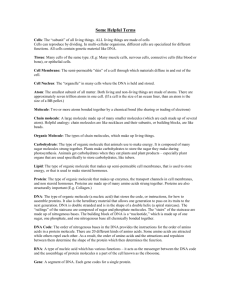Chapter 8 Common Exam Questions and Markschemes
advertisement
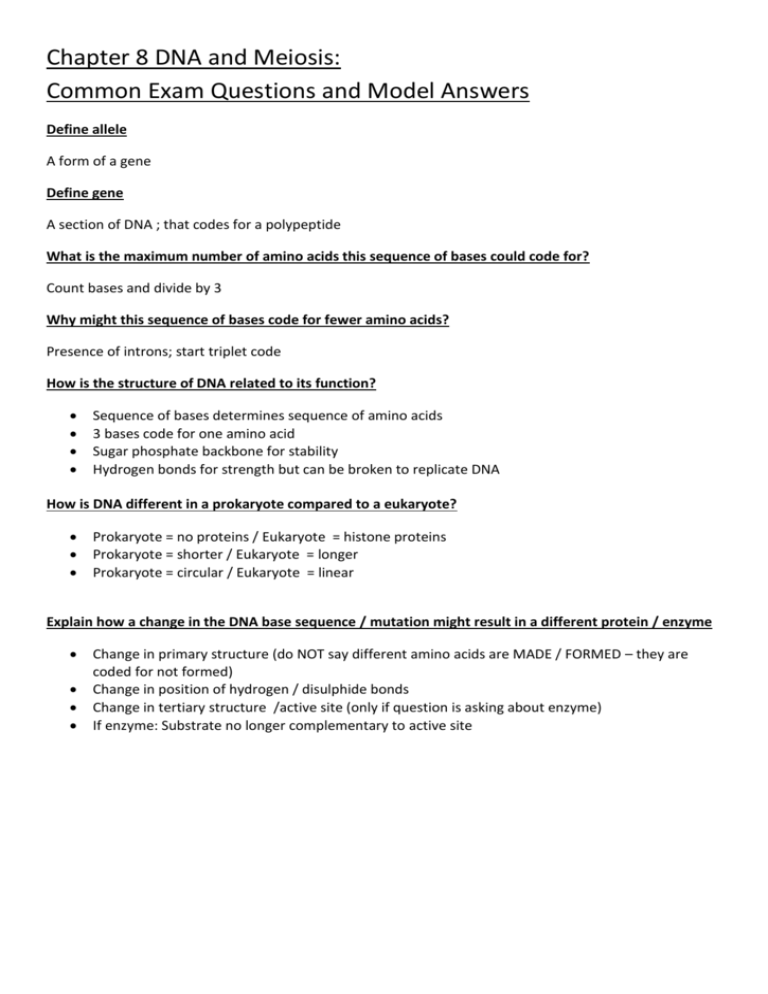
Chapter 8 DNA and Meiosis: Common Exam Questions and Model Answers Define allele A form of a gene Define gene A section of DNA ; that codes for a polypeptide What is the maximum number of amino acids this sequence of bases could code for? Count bases and divide by 3 Why might this sequence of bases code for fewer amino acids? Presence of introns; start triplet code How is the structure of DNA related to its function? Sequence of bases determines sequence of amino acids 3 bases code for one amino acid Sugar phosphate backbone for stability Hydrogen bonds for strength but can be broken to replicate DNA How is DNA different in a prokaryote compared to a eukaryote? Prokaryote = no proteins / Eukaryote = histone proteins Prokaryote = shorter / Eukaryote = longer Prokaryote = circular / Eukaryote = linear Explain how a change in the DNA base sequence / mutation might result in a different protein / enzyme Change in primary structure (do NOT say different amino acids are MADE / FORMED – they are coded for not formed) Change in position of hydrogen / disulphide bonds Change in tertiary structure /active site (only if question is asking about enzyme) If enzyme: Substrate no longer complementary to active site How does meiosis lead to genetic variation? If just 2 marks: Crossing over Independent segregation of homologous chromosomes. If more than 2 marks you will need to explain these 2 concepts Crossing over: Homologous chromosomes pair up Crossing over occurs Produces new combination of alleles Independent segregation of homologous chromosomes: Homologous chromosomes separate At random Producing varying combination of alleles Why is meiosis important? Maintains chromosome number (produces haploid gametes which join at fertilisation to form a diploid zygote) Leads to variation (some offspring better adapted to changing environments, leading to evolution)

